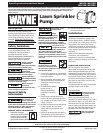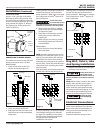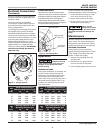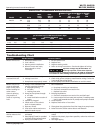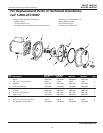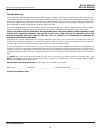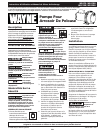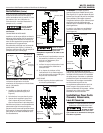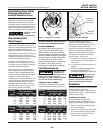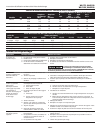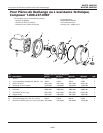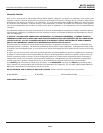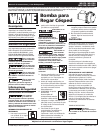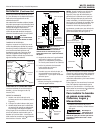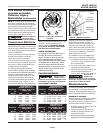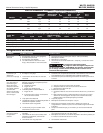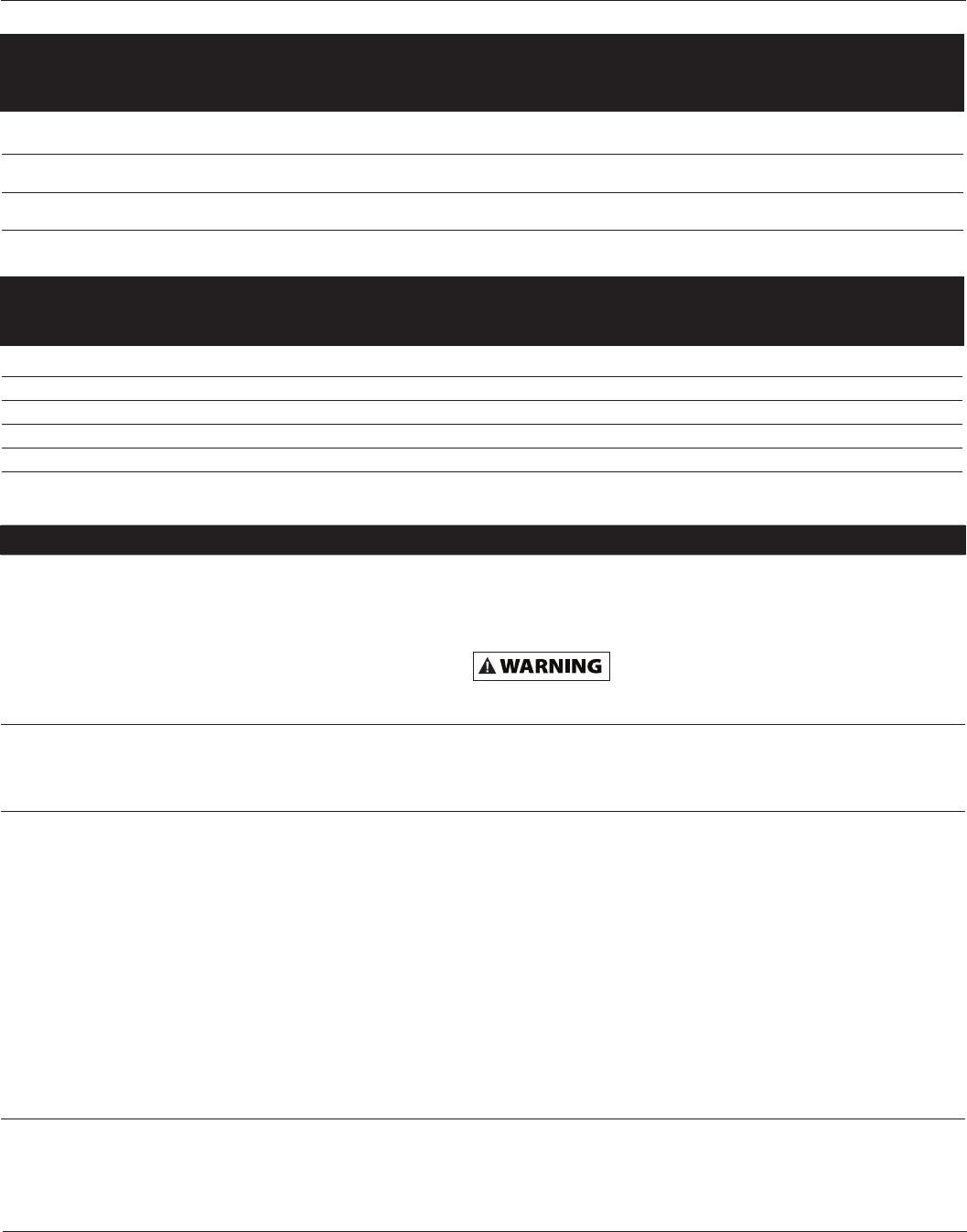
Operating Instructions and Parts Manual
4
1-1/4 2.6 3.9 5.5 9.4 14.1
1-1/2 1.2 1.9 2.6 4.4 6.7 9.4 15.9
2 0.6 0.8 1.3 2.0 2.8 4.7 7.1 10.0
2-1/2 0.6 0.8 1.2 1.3 3.0 4.2
* Multiply by 1.8 for steel pipe
psi Friction Loss in 100 Feet of Plastic Pipe*
Pipe (Gallons per Hour)
Size 1200 1500 1800 2400 3000 3600 4800 6000 7200
Troubleshooting Chart
Symptom Possible Cause(s) Corrective Action
Motor will not run 1. Disconnect switch is off
2. Fuse is blown
3. Starting switch is defective
4. Wires at motor are loose,
disconnected or wired
incorrectly
1. Be sure switch is on
2. Replace fuse
3. Replace starting switch
4. Refer to wiring instructions. Check and tighten all wiring
Capacitor voltage may be hazardous. To
discharge capacitor, touch short capacitor
terminals with an insulated screwdriver. BE SURE to hold handle
of screwdriver while making contact with capacitor terminals.
Motor runs hot and
overload kicks off
1. Motor is wired incorrectly
2. Voltage is too low
3. Pump house not properly vented
1. Refer to wiring instructions
2. Check with power company. Install heavier wiring if wire size
is too small (See wiring chart)
3. Be sure pump has sufficient ventilation to cool the motor
Motor runs but no
water is delivered
Note: Check prime
before looking for
other causes.
Unscrew priming
plug and see if
water is in priming
hole.
1. Pump in new installation did
not pick up prime through:
a. Improper priming
b. Air leaks
c. Leaking foot valve
2. Pump has lost prime through:
a. air leaks
b. water level below suction of
pump
3. Impeller is plugged
4. Check valve or foot valve is
stuck in closed position
5. Pipes are frozen
6. Foot valve and/or strainer are
buried in sand or mud
1. New installation:
a. Re-prime according to instructions
b. Check all connections on suction line
c. Replace foot valve
2. Existing installations:
a. Check all connections on suction line and shaft seal
b. Lower suction line into water and re-prime. If receding water
level in well exceeds suction lift, a deep well pump is needed
3. Clean impeller
4. Replace check valve or foot valve
5. Thaw pipes. Bury pipe below frost line. Heat pit or pump house
6. Raise foot valve and/or stainer above well bottom
Pump does not
deliver water to full
capacity
1. Water level in well is lower than
estimated
2. Steel piping (if used) is corroded
or limed, causing excess friction
3. Piping is too small in size
1. A deep well jet pump my be needed (over 25 ft. (7.6M) to
water)
2. Replace with plastic pipe where possible, otherwise with new
steel pipe
3. Use larger piping
www.waynepumps.com
WLS75, WLS100
WLS150, WLS200
WLS75 3/4 115 13.5 20 12 12 10 10
230 7.0 15 14 14 12 12
WLS100 1 115 14.8 20 12 12 10 10
230 7.4 15 14 14 12 12
WLS150 1-1/2 115 17.0 30 10 10 8 8
230 8.5 15 14 14 12 12
WLS200 2 230 12.0 15 14 14 12 12
Distance in Feet From Motor to Supply
Max. Fuse 0 51 101 201
Load Rating 50 100 200 300
Model HP Volts Amps Amps (AWG Wire Size)
WIRING CHART - RECOMMENDED WIRE AND FUSE SIZES



